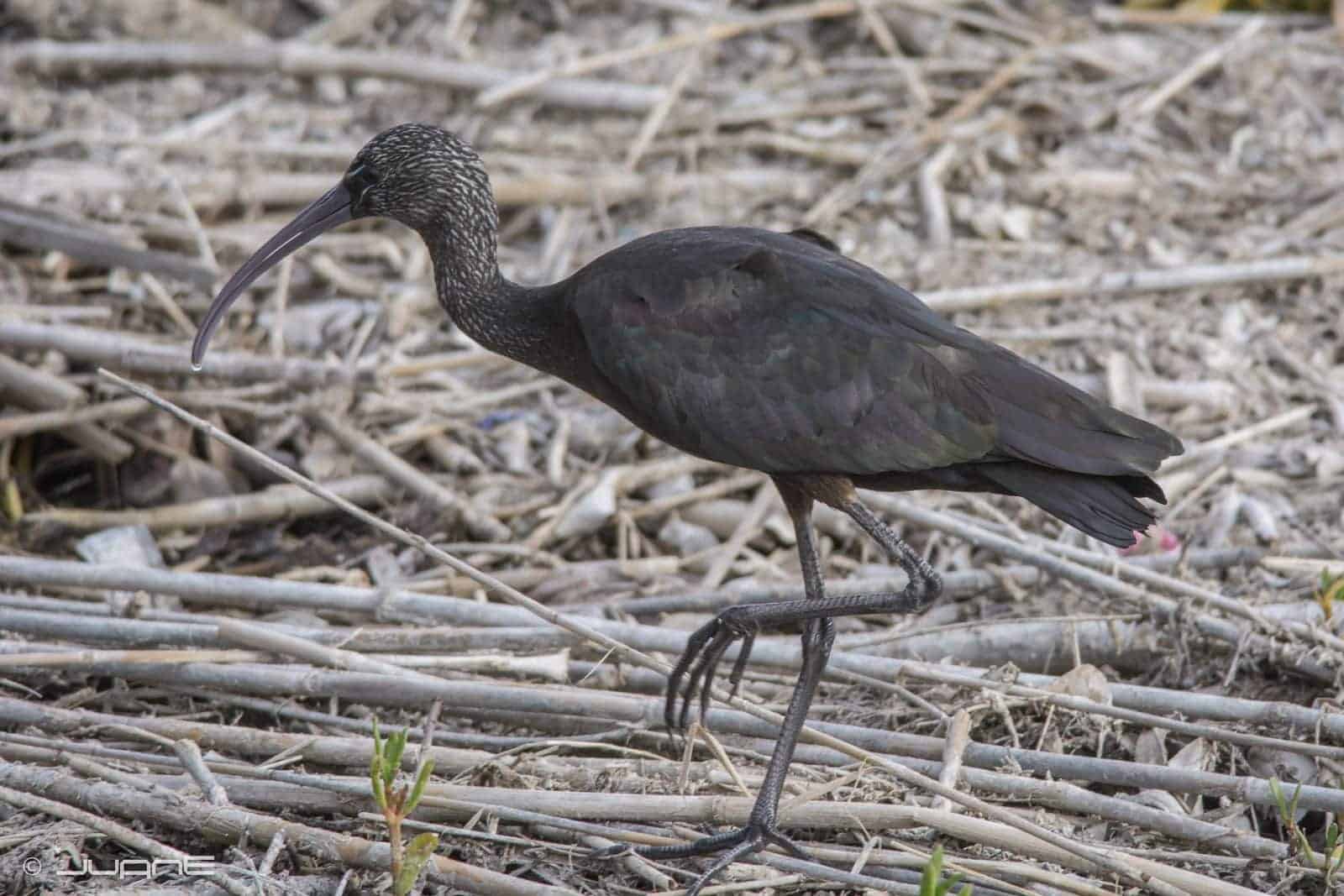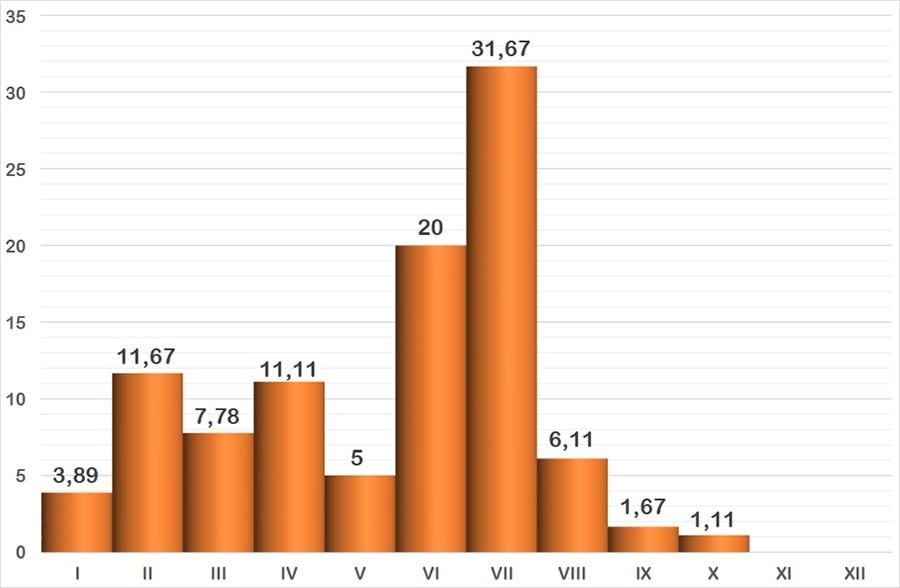This bird, related to the one that gave its shape to Thoth, the Egyptian god of wisdom and with authority over the rest of the gods, is a great ally in the fight against insects since it feeds on larvae. From a distance it seems to have black plumage, but up close you can see some striking metallic green, brown and purple flashes. The bill is long and curved downwards.

La imagen es autoría de Juan Emilio. Licencia Creative Commons con algunos derechos reservados.
Species 1
Glossy Ibis
Scientific name
Family 2
Taxonomic Affinity Group 3
Phenology 4
This bird’s weakness is in the concentration of breeding colonies, practically the entire population breeds at a just few venues. It does have a migratory behaviour, with dispersive movements, which can be seen in our localities, with most of the sightings being recorded during the migratory passages. While the migratory passage is very intense, accounting for half of the sightings during the months of June and July. The prenuptial passage lasts longer and, at the same time, is less intense. During the winter it misses the months of November and December and begins to appear in January.

The graph represents the probability of seeing a species during the year, grouped into months. The vertical axis indicates the percentage value. Each of the bars expresses its value. The horizontal axis represents the months: I = January, II = February, III = March, IV = April, V = May, VI = June, VII = July, VIII = August, IX = September, X = October, XI = November and XII = December.
Observation recommendations
This bird, which is considered “vulnerable” although it seems to have a positive population trend, can be observed from the path running next to the ‘Salinas Nuevas’, while it is only rearely seen in the ‘Gravera’.
Observation areas where we can find it
Notes
[1] The names used are from the list of birds of Spain, drawn up by SEO/BirdLife and updated to 2019 (https://seo.org/listaavesdeespana/). The reference is: Rouco, M., Copete, J. L., De Juana, E., Gil-Velasco, M., Lorenzo, J. A., Martín, M., Milá, B., Molina, B. & Santos, D. M. 2019. Checklist of the birds of Spain. 2019 edition. SEO/BirdLife. Madrid.
[2] The taxonomic family to which it belongs is indicated.
[3] Traditionally, waterbirds have been grouped according to their taxonomy or “taxonomic affinity”, i.e., when some birds coincide in certain features that allow them to be classified scientifically, but without leaving the rigour of science, they are put together in these groups so that they can be easily recognised. These groups are the following: Greves (belonging to the Podicipedae family), Herons and Similar (includes the families: Ardeidae -Herons- Ciconiidae -Storks- and Threskiornithidae -Ibises and spoonbills-), Ducks (the whole Anatidae family), Coots and Similar (the family Rallidae corresponding to Rails, Gallinules and Coots), Cranes (also with only one family, the Gruidae), Waders , a heterogeneous group, the most diverse of this classification, includes the families Burhinidae (Stone-curlews), Haematopodidae (Oystercather), Recurvirostridade (Avocets and Stilts), Glareolidae (Pranticole), Charadriidadea (Plovers), Scolapacidae and finally Gulls and Similar (the recently unified family Laridae, i.e. Gulls and Terns).
[4] Phenology studies the relationship between the cycles of living beings and meteorological factors, and in our latitude these factors manifest themselves as variations throughout the year, thus relating the seasons to the birds’ cycles (breeding, migratory journeys, etc.) The graph shows the probability of seeing a bird depending on the month. It uses data from 48 bird censuses carried out between October 2016 and September 2018. The method used is that of a census route with sampling stations, with a total count on the sheet of water.
